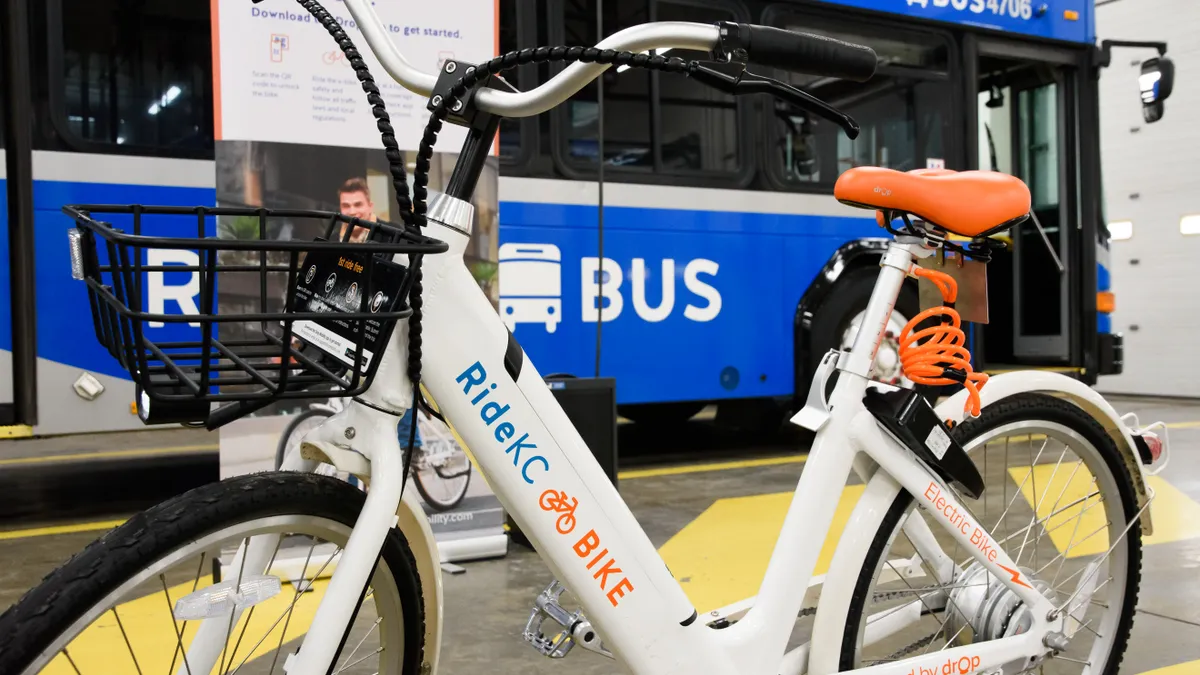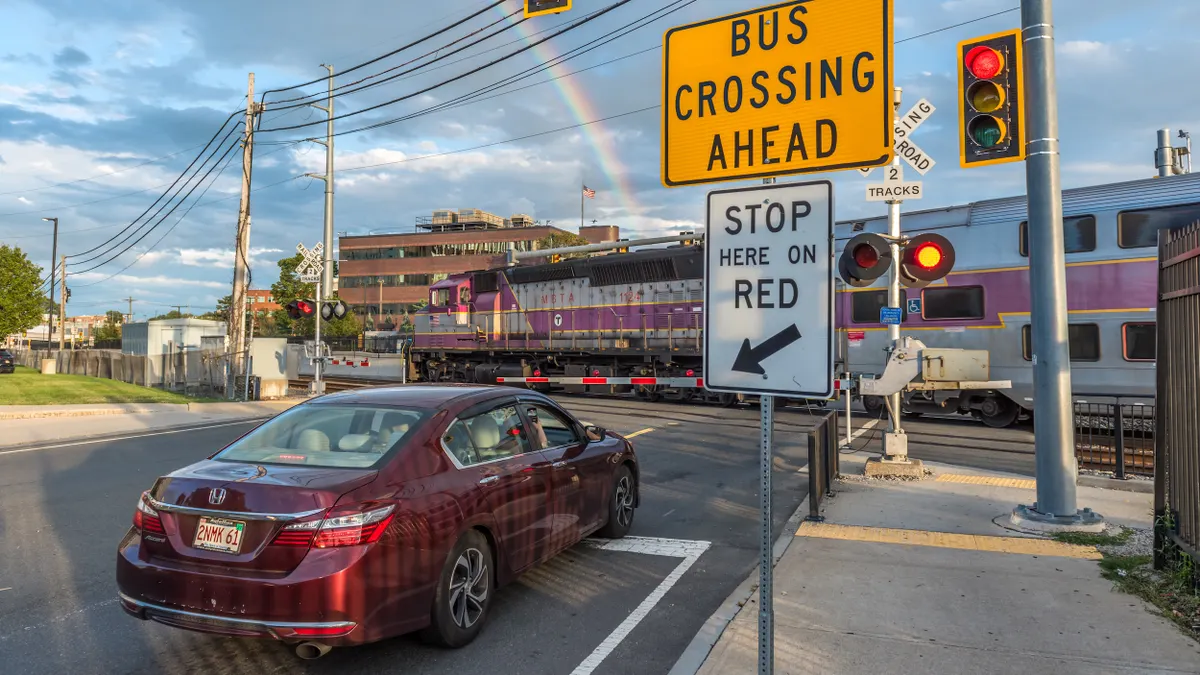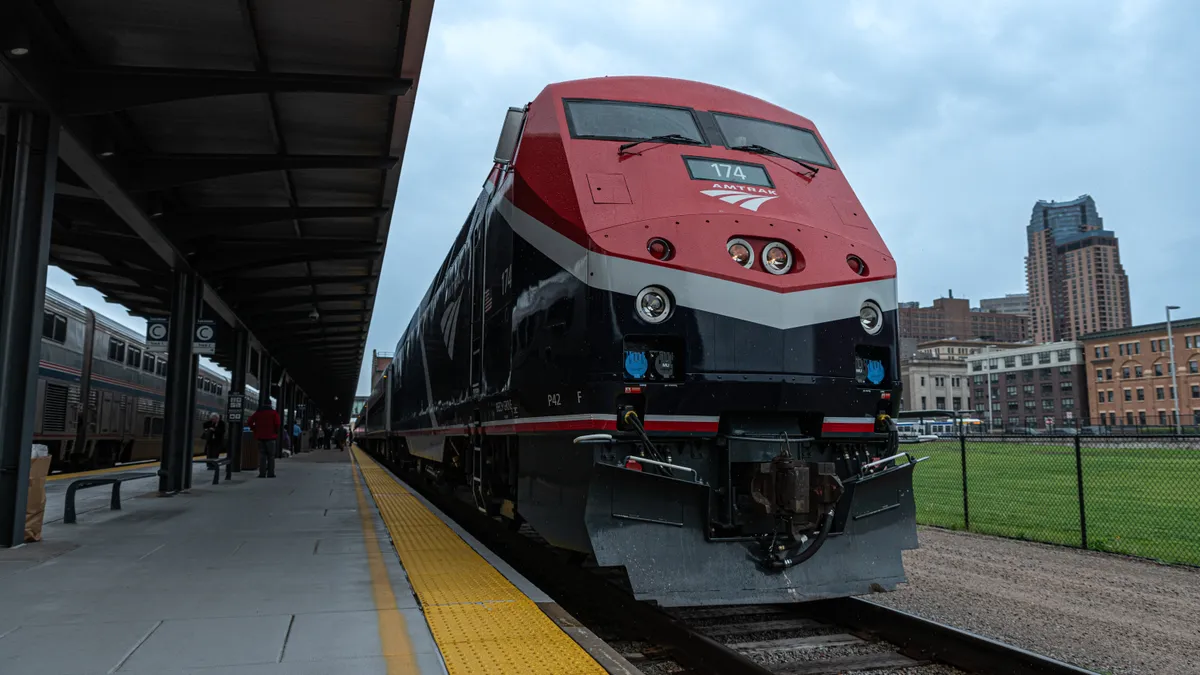The early days of micromobility launches were chaotic, with private companies dropping scooter and dockless bike fleets on unsuspecting cities. Qiming Weng says he saw how popular the vehicles were, but he thought the private fleets just weren’t sustainable economically or operationally.
In 2017, Weng co-founded Drop Mobility with fellow entrepreneur Dipesh Dar to give municipalities a bigger role in managing new micromobility fleets. The following year, Drop partnered with Kansas City, Missouri, on a new e-bike fleet, providing new vehicles and a software platform to build on the city’s existing bikeshare network. Despite the perception that working with city governments was "unsexy," Drop decided municipalities would be the best partners in building a "sustainable, reliable and equitable" micromobility fleet.
Today, Drop is in more than 10 cities — including Colorado Springs, Colorado, and Tulsa, Oklahoma — and will back the rebranded Blue Bike network in New Orleans that's launching in September.
Smart Cities Dive talked to Weng about the role cities can play in micromobility, fighting the perception that working with government means red tape and what the future of the road looks like.
The following interview has been edited for brevity and clarity.
SMART CITIES DIVE: What sets Drop apart in the micromobility space?
QIMING WENG: A lot of companies launched with this winner-take-all, take over the world mindset. They were operating these fleets in a way where, if we ran the economics, they didn’t really add up.
We enable municipal governments and their associated entities, like a transit agency, to run the shared fleets themselves. It turns out most governments have already invested in something like a bikeshare or some kind of active transportation. We’re giving them the same tools — the internet-connected vehicles, the bikes, the software platform — to be competitive and offer the same service that a private company might, but at a much more equitable price point and in alignment with local goals, rather than being abrasive to the communities they launch in.
What was the problem with how micromobility fleets were deployed?
WENG: The companies were promising the world. They’d say it’s totally free [for the city], we do it all on consumer rider revenue. When you do the math, it doesn’t add up. It turns out a lot of the vehicles were low quality, and a lot of the operations were not the best for cities. It wasn’t the deal that was promised.
What do you as a fleet operator get from partnering with the government?
WENG: There are these local network effects. Whoever has the best vehicles and the best access within a certain region will likely be the dominant service provider, if the price points and convenience factors check out. So we thought, the No. 1 player is oftentimes the municipal government because they already have the investment, they are most likely to be sustainable and to offer the largest fleet. We don’t think there’s a benefit to maintaining one shared brand across the United States.
There’s also a huge aspect of value generation that comes from sponsorship, like how public buses are subsidized by advertisements. That’s not really possible with a private operator, but it is with the municipality. It unlocks this additional form of funding, which allows us to reduce costs and become more equitable.
Plenty of people have horror stories of government services being slow or not having the right expertise. How has your experience been working with municipalities?
WENG: There is this stereotype that working with the government is a slow endeavor. For a long time, our business was considered unsexy by our peers and our investors. But it turns out that doing the thing other people are ignoring is a good way to find an opportunity.
What we’ve found is most governments are becoming very open-minded. Ten years ago, Uber and Lyft really blindsided a lot of municipalities and were able to push to get their objectives. But governments have learned and reacted to that, and now they’re looking for a different experience. For us, it’s about taking that Silicon Valley experience with a mobile app and democratizing it and allowing a municipality to offer the same level of service you would expect from a native mobile-first experience.
What does a government get from partnering with Drop?
WENG: There’s the physical aspect: the equipment, the bikes, the batteries, the charging platform. We also provide the software that enables customer service and vehicle operation, as well as battery monitoring. But there is also the side benefit of data that is available for the first time in an anonymized way that is really beneficial for planners thinking about the future of downtown areas.
What is the future of micromobility in U.S. cities?
WENG: One trend is that municipal governments are really investing in bike lanes and dividing up the road into more types of transit options and limiting the speeds of cars. In Europe, as their municipal areas are more dense, you see Paris limiting when cars can be downtown [and] where they can go. These are the trends that are kind of unstoppable. As cities get denser, we have to find better ways of moving people around. We think micromobility, both shared fleets and consumer-owned devices, will play a huge role in that.
Then, when you think about multimodal transportation, someone needs to be the coordinator of all of these modes. We think this is where you need one public forum to be able to make this information available and help consumers make decisions on how to get around. We’re interested in how government technology can support that and be the coordinator.
We see ourselves as allowing municipalities to get more value out of every square mile or every square foot of right of way.




















